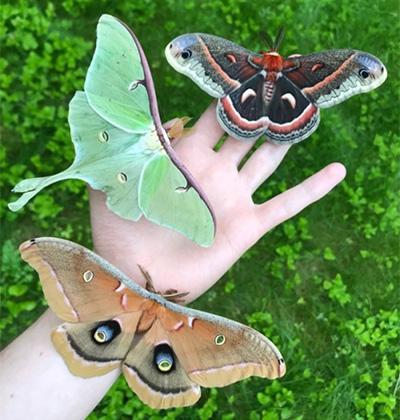Northern Hardwood Forests as Refuge for Giant Silk Moths Threatened by Non-Target Biological Control

Giant silk moths are among the most iconic native insects, renowned for their size and beauty. Across New England and lower New York, many once common giant silk moth species have declined or disappeared. The decline has been linked to parasitism by a tachinid fly (Compsilura concinnata) introduced to control gypsy moth a century ago. While the fly had little impact on the target species, it now attacks the caterpillars of approximately 200 species of native butterflies and moths.
NSRC researchers hypothesized that the transition from oak-dominated forests of southern New England and New York to northern hardwoods may limit the fly, either directly through habitat preference or indirectly because gypsy moths persist at higher population densities in forests with a high oak component relative to maple-beech forests. Researchers assessed parasitism using experimentally established sentinel populations.
They created sentinel populations by rearing the caterpillars of a species of silk moth in the lab and placing them in the field for 5-6 days at low population densities to simulate natural conditions. Larvae were retrieved at the end of the exposure period and reared individually. Mortality was recorded and parasitism was estimated as a percentage of the retrieved larvae. Parasitism across the 16 sites in the Adirondacks was low (~17%) but variable (0-71%). Surprisingly, there was no relationship between fly parasitism of silk moths and basal area of oak or any other forest cover metric. Contrary to the researchers’ hypothesis, parasitism is not driven by oak prevalence or gypsy moth abundance.
